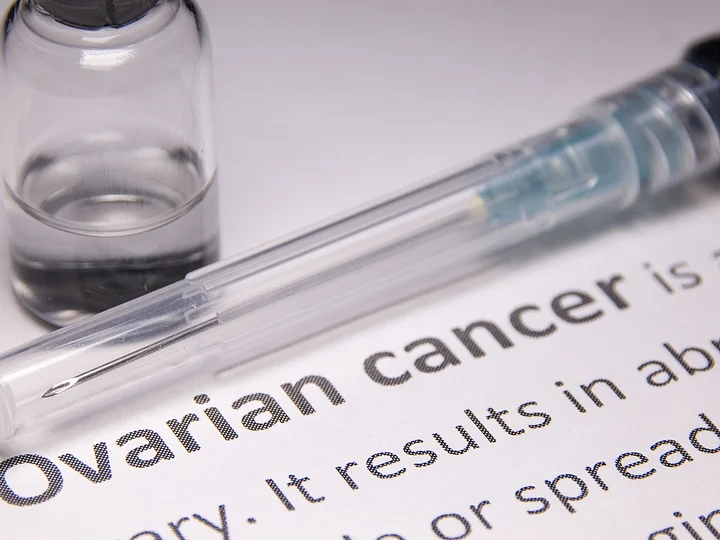Ovarian cancer is the unwanted growth of cells in the ovaries. The cells multiply and invade and destroy healthy tissues in the body. The reproductive system of females have two ovaries – one on each side of the uterus that are responsible for producing eggs and the hormones – estrogen and progesterone.
Ovarian cancer can occur in several different parts of the ovary like ovary’s germ, stromal, or epithelial cells. Germ cells become eggs. Stromal cells make up the substance of the ovary. Epithelial cells are the outer layer of the ovary.
According to the American Cancer Society, around 22,240 women were diagnosed with ovarian cancer in the United States in 2018 out which 14,070 were at a higher risk of deaths from this type of cancer. Let's know about the causes, symptoms, types, diagnosis and treatment of ovarian cancer.
Ovarian Cancer: Symptoms
The symptoms of ovarian cancer may not be noticeable at the initial months of the condition. According to the doctors of Mayo Clinic, signs and symptoms of ovarian cancer may include:
Abdominal bloating or swelling
Feeling full when eating
Unwanted weight loss
Discomfort in the pelvic area
Fatigue
Back pain
Changes in bowel habits
A frequent need to urinate
Pain during sex
Changes in periods
Ovarian Cancer: Causes
According to the doctors of Cleveland Clinic, the exact causes of ovarian cancer are still not known. But the doctors have found the factors that increase the risk of the cancer:
Older women between the age of 40 and 63 are at a higher risk to get affected by ovarian cancer.
Obese women are at a higher risk as well.
Women who have their first pregnancy after the age of 35 have more chances of suffering from ovarian cancer.
Women on hormonal therapy have a higher risk of suffering from ovarian cancer.
Doctors know that ovarian cancer begins when there are changes in the DNA of the cells in or near the ovaries. The cells tend to grow and multiply quickly due to these changes, creating a mass (tumor) of cancer cells. The cancer cells continue living even after the death of the healthy cells. They can invade nearby tissues and break off from an initial tumor to spread to other parts of the body.
Types of Ovarian Cancer
The type of ovarian cancer depends in which type of cell does the cancer begins. According to the American Cancer Society, ovarian cancer are of three types:
Epithelial ovarian cancer is the most common type of ovarian cancer which includes several subtypes like serous carcinoma and mucinous carcinoma.
Stromal tumors are the rare tumors that are usually diagnosed at the initial stages of ovarian cancers.
Germ cell tumors are also rare ovarian cancers that occur at a younger age.
Ovarian Cancer: Stages
According to the doctors of Cleveland Clinic, there are four stages of ovarian cancer.
At Stage I, cancer affects only one ovary or one fallopian tube. The Subtype of Stage I, IB affects ovaries or fallopian tubes. Stage IC affects both ovaries or fallopian tubes and it is found outside of the ovary.
At Stage II, cancer has spread to the uterus and the ovaries. In stage IIB, cancer spreads to other nearby organs of your abdomen.
At Stage III, cancer has spread beyond the peritoneum cavity through lymph nodes. In stage IIIB, the tumor is about 2 centimeters and spreads beyond the abdominal space. In stage IIIC, cancer has moved outside of the pelvis area and is larger than 2 centimeters.
At stage IV, cancer is the most severe and has spread throughout the body. In stage IVA, it affects the areas near the lungs and in stage IVB, cancer can be found in the lymph nodes of the groin.
Ovarian Cancer: Diagnosis
Doctors will perform a pelvic exam to feel for lumps or changes in and around the ovaries.
They may recommend imaging tests such as transvaginal ultrasound, for more accurate results than a traditional ultrasound test.
CT scan is used to test the abnormalities in the chest, abdomen, and pelvis.
A simple blood test may help measure the level of the CA-125 protein which may help indicate the presence of ovarian cancer.
In a few cases, surgical procedures such as minimally invasive laparoscopy and robotic surgery are used to remove sample pathologists to determine if cancer is present.
Ovarian Cancer: Treatment
According to CDC, a few treatment options for ovarian cancer include:
Surgery to remove an ovary, both the ovaries, and ovaries and the uterus or the parts to which cancer has spread.
Chemotherapy is in which the chemicals are injected through the veins to kill the fast-growing cancer cells. The chemicals are left in the region where the cancer is found and drained after some time.
Target therapy is used to kill the cancer cells by targeting their weaknesses and the cells may be tested to choose an appropriate target therapy.
Hormone therapy in which drugs are used to block the effects of the hormone estrogen on ovarian cancer cells since estrogen may help them grow.

